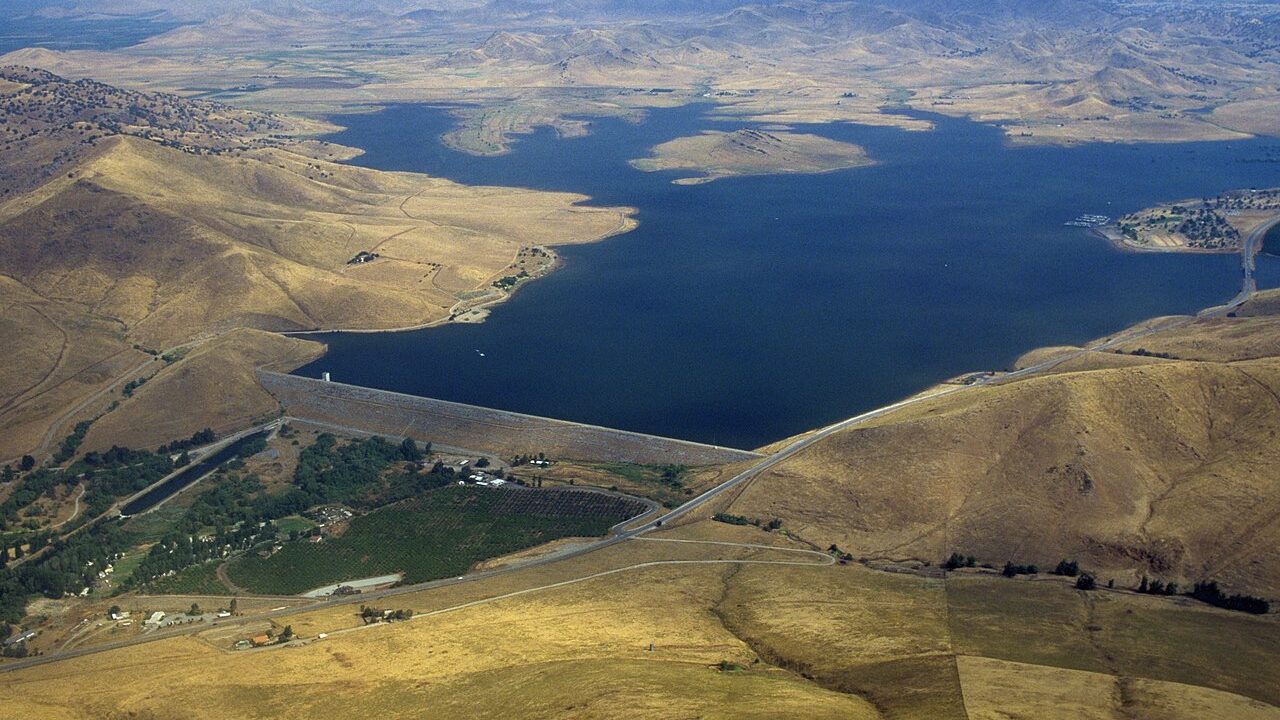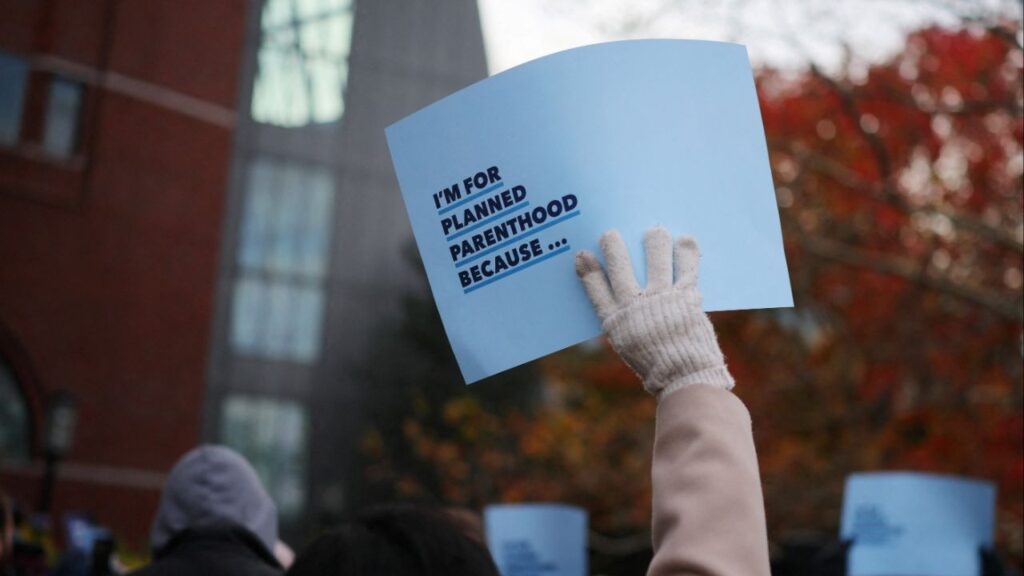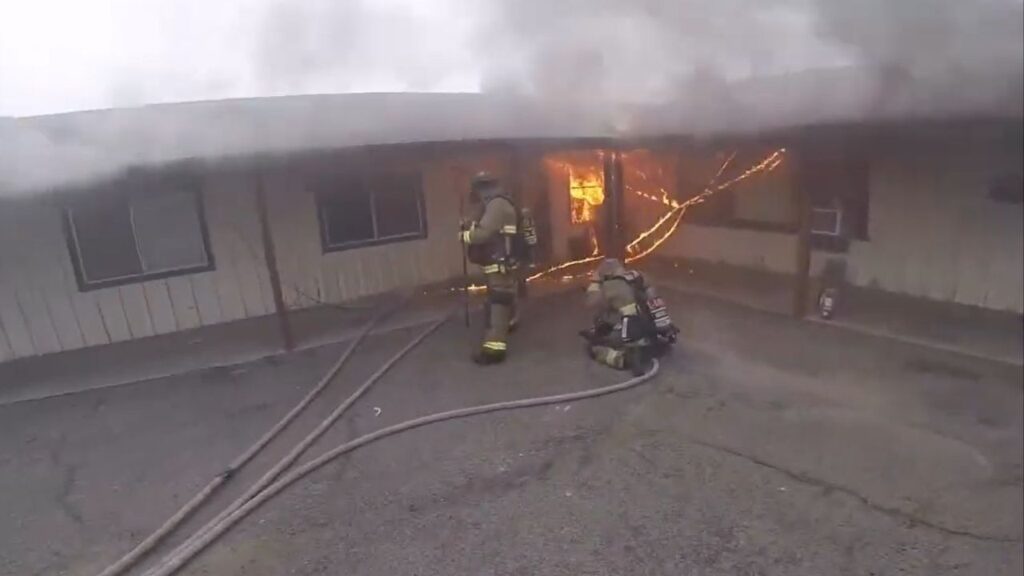Success Lake (above) and Lake Kaweah in Tulare County began releasing massive amounts of water being stored for summer irrigation to comply with President Trump's executive order to send water to Southern California to fight wildfires. (US Army Corps of Engineers)

- Water released from two Tulare County lakes to fight southern California wildfires on President Trump's order.
- Water mangers note the barriers that make it virtually impossible for Tulare County river water to be used in southern California.
- "The reservoir may belong to the federal government, but the water is ours," says Kaweah River Water Master Victor Hernandez.
Share
|
Getting your Trinity Audio player ready...
|
The sudden announcement Thursday by the U.S. Army Corps of Engineers that Kaweah and Success lakes would immediately begin dumping water was in response to President Trump’s Jan. 24 executive order mandating that federal officials exert all efforts to get more water to fight southern California wildfires, the Army Corps confirmed Friday.

Lois Henry
SJV Water
“Consistent with the direction in the Executive Order on Emergency Measures to Provide Water Resources in California, the U.S. Army Corps of Engineers is releasing water from Terminus Dam at Lake Kaweah and Schafer Dam at Success Lake to ensure California has water available to respond to the wildfires,” wrote Gene Pawlik, a supervising public affairs specialist in the Army Corps’ Washington, D.C. office.
Tulare County water managers were perplexed and frustrated, noting both physical and legal barriers that make it virtually impossible for Tulare County river water to be used for southern California fires.
First, it would have to be pumped at great expense across the San Joaquin Valley to get to the California Aqueduct and then travel hundreds of miles south.
Second, this isn’t “loose” water free for the taking.
“Every drop belongs to someone,” said Kaweah River Watermaster Victor Hernandez. “The reservoir may belong to the federal government, but the water is ours. If someone’s playing political games with this water, it’s wrong.”
Related Story: California Shoots Down Trump’s Claim That US Military ‘Turned on ...
Water Managers Received an Hour’s Notice
It was no game on Thursday when area water managers were given about an hour’s notice that the Army Corps planned to release water up to “channel capacity,” the top amount rivers can handle, immediately.
The Army Corps later agreed to more measured releases, alleviating a mad scramble to alert first responders and have crews on standby in case river banks were breached and levees overtopped, as happened during the 2023 floods.
Flows in the Tule River went from 55 cubic feet per second Thursday to a high of 987 cfs and dropped to 798 cfs by Friday afternoon. Kaweah flows went from 5 cfs to 1,545 cfs.
That’s where flows are expected to stay, according to Tulare Irrigation District Aaron Fukuda.
How long those flows will last is another question left unanswered by the Army Corps.

Districts Allowed to Hold Excess Water
The releases are from excess water that downstream districts are allowed to hold in reservoirs to hedge against dry years.
The Army Corps requires its reservoirs to be drawn down in fall to keep “flood control capacity,” or space, available in anticipation of winter storms and spring snowmelt.
Typically, however, ag users can negotiate to hold a little extra water in the lakes, or “encroach” on that flood control capacity, depending on weather forecasts, climate models, and snow surveys.
The winter flood control capacity limit for Lake Kaweah is 12,000 acre feet and it was holding about 39,000 acre feet Thursday morning, according to Hernandez.
He said that under the sort of dry conditions now being experienced in the region, Army Corps guidelines allow the lake to go up to 72,000 acre-feet.
“We just had a snow survey 10 days ago that showed very little snow coverage, about 45,000 acre-feet, and were talking almost daily with the Corps watching forecasts for these new storms that are expected to get us about an inch,” Hernandez said. “There was no risk of flood at this point.”
He was still stunned by the call he got Thursday ordering Kaweah to evacuate 27,000 acre feet immediately. Success was ordered to dump 4,923 acre-feet to bring it down to 12,295 acre-feet.
‘A Complete Lack of Understanding’
The Army Corps did not respond to questions about whether it will keep all its California reservoirs at flood control capacity going into the future. If so, that could have a major impact on how much is available for irrigation.
“A decision to take summer water from local farmers and dump it out of these reservoirs shows a complete lack of understanding of how the system works and sets a very dangerous precedent,” said Dan Vink, a longtime Tulare County water manager and principal partner at Six-33 Solutions, a water and natural resource firm in Visalia.
“This decision was clearly made by someone with no understanding of the system or the impacts that come from knee-jerk political actions.”
For now, water managers are capturing flows in recharge basins, Eric Limas, General Manager for the Lower Tule River and Pixley irrigation districts, wrote in a text.
“I have no idea if this is the new norm for operations or not. I certainly hope not.”
About the Author
CEO and editor Lois Henry has spent 30 years covering the San Joaquin Valley.
About SJV Water
SJV Water is an independent, nonprofit news site covering water in the San Joaquin Valley, www.sjvwater.org. Email us at sjvwater@sjvwater.org.



















